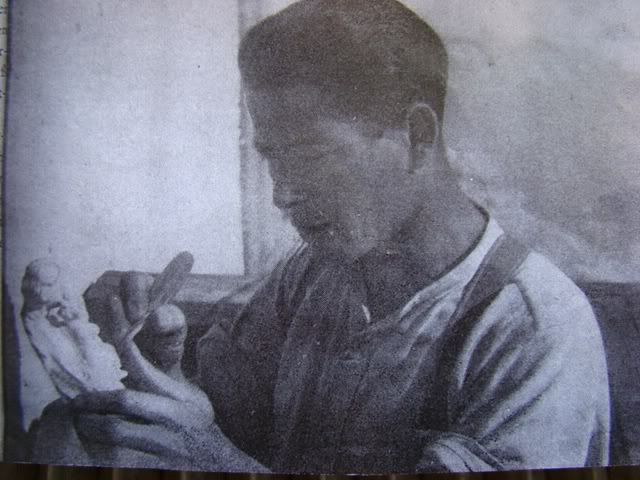http://youtu.be/MepHOlXh-w0
Now, I would love to have a look on the no. 8 cute animal - the chipmunk that Ms. Maddle mentioned on her above video:
http://en.wikipedia.org/wiki/Chipmunk
Chipmunk’s species list :
1. Subgenus Eutamias 金花鼠

- Siberian chipmunk, Eutamias sibiricus 西伯利亞花栗鼠, 生活在亞洲東北部
2. Subgenus Tamias[24] 花栗鼠, 也叫花鼠
3. Subgenus Neotamias 生活在北美洲的西部
Western chipmunk, 23 species :
- Allen's chipmunk, Neotamias senex
- Alpine chipmunk, Neotamias alpinus
- Buller's chipmunk, Neotamias bulleri
- California chipmunk, Neotamias obscurus
- Cliff chipmunk, Neotamias dorsalis
- Colorado chipmunk, Neotamias quadrivittatus
- Durango chipmunk, Neotamias durangae
- Gray-collared chipmunk, Neotamias cinereicollis
- Gray-footed chipmunk, Neotamias canipes
- Hopi chipmunk, Neotamias rufus
- Least chipmunk, Neotamias minimus
- Lodgepole chipmunk, Neotamias speciosus
- Long-eared chipmunk, Neotamias quadrimaculatus
- Palmer's chipmunk, Neotamias palmeri
- Panamint chipmunk, Neotamias panamintinus
- Merriam's chipmunk, Neotamias merriami
- Red-tailed chipmunk, Neotamias ruficaudus
- Siskiyou chipmunk, Neotamias siskiyou
- Sonoma chipmunk, Neotamias sonomae
- Townsend's chipmunk, Neotamias townsendii
- Uinta chipmunk, Neotamias umbrinus
- Yellow-cheeked chipmunk, Neotamias ochrogenys
- Yellow-pine chipmunk, Neotamias amoenus

Type: Mammal
Diet:
Chipmunks have an omnivorous diet 雜食性 primarily consisting of seeds, nuts and other fruits, and buds.[11][12] They also commonly eat grass, shoots, and many other forms of plant matter, as well as fungi, insects and other arthropods, small frogs, worms, and bird eggs.[11][12][13][14][15][16]
At the beginning of autumn, many species of chipmunk begin to stockpile nonperishable foods for winter. They mostly cache their foods in a larder in their burrows and remain in their nests until spring, unlike some other species, which make multiple small caches of food.[11] Cheek pouches allow chipmunks to carry multiple food items to their burrows for either storage or consumption.[12]
Ecology and life history:
Eastern chipmunks mate in early spring and again in early summer, producing litters of four or five young twice each year.[11] Western chipmunks breed only once a year. The young emerge from the burrow after about six weeks and strike out on their own within the next two weeks.[19]Chipmunks construct expansive burrows which can be more than 3.5 m in length with several well-concealed entrances. The sleeping quarters are kept extremely clean as shells and feces are stored in refuse tunnels.[citation needed]
The eastern chipmunk hibernates in the winter, while western chipmunks do not, relying on the stores in their burrows.[21]
Chipmunks typically live about three years, although have been observed living to nine years in captivity.[22]
Chipmunks in captivity are said to sleep for an average of about 15 hours a day. It is thought that mammals which can sleep in hiding, such as rodents and bats, tend to sleep longer than those that must remain on alert.[23]
有趣:
1. 有為3個種類, 西伯利亞種 (生活在亞洲東北部), 東 (生活在美國和加拿大的東部) / 西 (生活在北美洲的西部) 兩種.
2. 雜食 : 種子, 果仁, 水果, 芽, 草, 荀... 鳥蛋, 昆蟲等等.
3. 東部花栗鼠一年兩次播種, 一為初春, 另一次為初夏. 每次生4至5隻小鼠. 西部花栗鼠一年一次播種, 小鼠出世後可以住在地洞內6星期左右, 隨後兩星期內就被趕出自立.
4. 金花鼠愛清潔, 睡覺的地方會保持清潔, 外殼和糞便僧另存在垃圾地道去. 牠們建穴洞可以擴展3.5咪的不同幾個隱蔽的入口.
5. 東部花栗鼠在冬天會冬眠, 西部花栗鼠則不冬眠, 不過會靠存儲在洞穴來的食物來過冬.
6. 一般壽命3年, 大命最長9年.
7. 如果花栗鼠有個隱蔽的洞穴的話, 牠們可以平均睡眠15小時. 然而看來那些沒有隱蔽的洞穴的哺乳動物, 一天到晚都要警覺的就沒睡那麼長了.
further more :
http://animals.nationalgeographic.com/animals/mammals/chipmunk/#
Lively and speedy critters, chipmunks are small members of the squirrel family. Their pudgy cheeks, large, glossy eyes, stripes, and bushy tails have made them a favorite among animators, and landed them a series of starring roles in Hollywood.
Of the 25 species of chipmunks, all but one, Asia’s Tamias sibiricus, is found in North America. Ranging from Canada to Mexico, they are generally seen scampering through the undergrowth of a variety of environments from alpine forests to shrubby deserts. Some dig burrows to live in, complete with tunnels and chambers, while others make their homes in nests, bushes, or logs.
Depending on species, chipmunks can be gray to reddish-brown in color with contrasting dark and light stripes on the sides of their face and across their back and tail. They range in size from the least chipmunk, which, at 7.2 to 8.5 inches (18.5 to 21.6 centimeters) and 1.1 to 1.8 ounces (32 to 50 grams), is the smallest chipmunk, to the Eastern chipmunk, which grows up to 11 inches (28 centimeters) and weighs as much as 4.4 ounces (125 grams).
Chipmunks generally gather food on the ground in areas with underbrush, rocks, and logs, where they can hide from predators like hawks, foxes, coyotes, weasels, and snakes. They feed on insects, nuts, berries, seeds, fruit, and grain which they stuff into their generous cheek pouches and carry to their burrow or nest to store. Chipmunks hibernate, but instead of storing fat, they periodically dip into their cache of nuts and seeds throughout the winter.
Their shrill, repeated, birdlike chirp is usually made upon sensing a threat but is also thought to be used as a mating call by females. Chipmunks are solitary creatures and normally ignore one another except during the spring, when mating takes place. After a 30-day gestation, a litter of two to eight is born. The young stay with their parents for two months before they begin to gather their own provisions for the winter ahead.
For the most part, chipmunks, although susceptible to forest fragmentation, are not currently threatened. However, the Palmer’s chipmunk (Tamias palmeri) is considered a vulnerable species.
http://www.buzzle.com/articles/chipmunks-facts-about-chipmunks.html
Interesting Facts :
Chipmunks have a distinct way of communicating with each other. They make shrill bird-like chirping sounds and use gestures to communicate with each other.
Most of the species have alternating dark and light stripes on their body.
Though its mouth is very small, its cheeks can expand to three times its head size.
They have pouches in their cheeks. These pouches allow them to keep food in their cheeks till they can transfer it to their burrows.
They burrow a main tunnel where they rest and give birth to their young ones, the rest of the tunnels are dug for storing food.
One chipmunk may store up to 8 pounds of food in its burrows.
They place leaves and grasses in their main burrow so that they can rest comfortably and give birth to their young ones.
They take an average of 75 breaths in a minute.
They can be extremely territorial in the area around their burrow or nest. Their home range may be up to ½ acre (0.2 ha), but the adult only defends a territory about 50 feet (15.2 m) around the burrow entrance.
They are very active during the early morning and late afternoon.
Their mating period begins from the month of February to April. The number of young ones lies between 1 to 9. They may have around 4 to 5 young ones twice a year.
For the number 10, The Snow Leopard, I did write a blog as following:
http://meiwechner2099.blogspot.com.au/2014/05/snow-leopards-purr.html
For the number 9, The Clown fish , I did write a blog as following:
http://meiwechner2099.blogspot.com.au/2014/05/clown-fish_17.html



















0 意見:
張貼留言